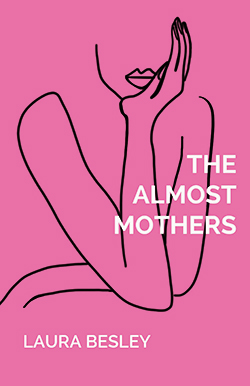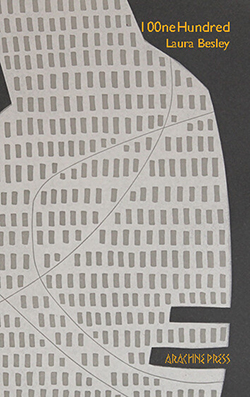Opinions differ on how long micro fiction is – some say 300 words, others say fewer – but for the sake of this article I’m going to cap the maximum at 100 words, excluding title. The 100-word story is growing in popularity and there are several places to submit as well as various call outs. Shorter, even, are 50-word stories, stories of ten words, or six, and many people write tweet-length stories on Twitter based on the daily #vss365 prompts.
All these stories still need to be stories. A common pitfall, especially for those new to writing short-short fiction, is to write a scene, not a story. But like any other story – consisting of a main character, or characters, a setting, and a dilemma – micro fiction also needs movement: a change in that character or a shift in emotion. So, how do we fit all of that into one hundred words or fewer?
Characters
Let’s start with characters. Many stories this length will have only one character, or at least one active character, i.e. there is no interaction with another character, but that other character may be referred to by the main character. In Pièce de Résistance (Selcouth Station, Oct. 2021) a woman writes her lover a letter, spilling her frustrations onto the page. What makes it a story, not merely a scene, is her shift from ‘I decide this time we’re through’ in the opening paragraph to her admission in the final sentence that she ‘will never walk away.’
Most common is for stories to have an interaction that rests on two characters. In Fill in the Blanks (101 Word Stories, Jan. 2020) a Head Mistress talks to a father about bringing his child into school without having had breakfast. Initially she is angry with the father – on her pupil’s behalf – but later realises that it is not his fault, and she offers to help.
It is possible to have more than two characters, but don’t overcrowd your piece. Wind Chill Factor (Citron Review, Dec. 2021) has three characters: the main character, his mother and his wife, Marian, although she is more of an ensemble character. Marian takes her mother-in-law’s coat, then goes to the kitchen to make tea, which leaves the two main characters alone. This is where the main action of the story plays out: the son having decided to stand up to his mother’s criticisms, only to be silenced at the mere raising of her eyebrow. At the end of the story, Marian is primed to reappear – signaled by the rattling of the teacups.
Description
None of the characters in these stories have any description. No hair or eye colour, height or weight, the clothes they’re wearing. Nothing. In stories of this length decide whether such details are important and if not, omit them. Use descriptions sparingly and only when it adds to either the character, setting or story.
This line is taken from Brick Wall (101 Word Stories, Oct. 2021):
I look down at my only suit, which, after googling how to get the creases out of it, I hung in the bathroom for two days.
This sentence adds detail to all three:
- Character – a reader could interpret that because the main character has only one suit, they are young and/or not in a position to buy another, or possibly have any need to. It’s likely the suit doesn’t get worn, because it’s creased – maybe it’s been forgotten at the bottom of the wardrobe – or maybe it’s creased because it’s been worn too often. Either way, the character doesn’t have the money to take it to the dry cleaner’s.
- Setting – the suit is hanging in the bathroom, so the character is in a house, mostly likely their home.
- Story – most readers will infer that the need for wearing a suit is for a job interview or a funeral. As the story progresses, it becomes clearer which it is.
Dialogue
When used, dialogue needs to either progress the story or add to the character or setting. Referring back to ‘Brick Wall’ above, the opening line is:
‘You’re dressed up nice,’ Ma says.
Now we know for a fact that the suit isn’t worn often, otherwise the mother wouldn’t have commented on it.
In Homecoming (101 Word Stories, Aug. 2021) more than half of the story is dialogue, but there is only one dialogue tag. Ideally keep these to a minimum and let the characters’ words do the heavy lifting.
When I get back from South America my mother tells me Dad is dead. ‘Heart attack,’ she says. ‘Not surprising considering how much he ate and drank.’
‘Why didn’t you tell me?’
‘Oh, Felicity, you’d never have got back in time. Anyway, how was your… holiday?’
‘I don’t want to talk about my field trip right now, Mother.’
‘Okay, darling. Take a shower and I’ll see you at dinner.’
Initially, in this section above, the dialogue conveys information: the mother tells her daughter how her dad died. Later on, though, the dialogue works in a different way – it gives us information about the characters, both individually as well as how they interact with one another. We learn that Felicity has a job in which she needs to travel and go on field trips; we also learn that her mother has no respect for this work, calling it a holiday. There is neither comfort nor warmth in the mother’s words, either about her late husband or for her daughter, highlighting further their cold and fractured relationship.
Editing
When writing micro fiction, 90% of the work is in the editing. Typically the advice for writing short-short stories is to write long, then cut down, and I largely agree with this. Occasionally a first draft might be a few words under, but they’re much more likely to be over. Cutting ten to fifteen words shouldn’t pose too much of an issue, which I’ll discuss further below. You can also achieve twenty to thirty fairly easily. But if a draft is above 150 words, it’s worth considering whether the story works in one hundred words or fewer. Some stories just need more breathing space.
How to cut words?
- Cut all superfluous words, such as: that (in some case), just, like, etc.
- Verbs should be specific, i.e. use tiptoe or creep instead of walk.
- Titles should be part of the story, but not to give too much away.
- Keep character and place descriptions to a minimum, unless they strengthen the story.
- Use dialogue well and avoid dialogue tags if possible.
I’ll give some examples below from first drafts of my stories:
- I told people
thatNeil was dead, rather thanhave toendure their pitying looks (-3). - For the last few weeks they’ve sat in silence, she on her phone, he looking out of the window.
For the last few weeksRecentlythey’ve sat intheir silence, she on her phone, he looking out of the windowhas been as stiff as the wooden chairs they’re sitting on. (-5)
- What’s in a Name?
Audrey never felt she lived up to her namesake, with her dirty blonde hair and blue eyes. Some things were easy to change: she dyed her hair auburn, got coloured lenses and learned how to do a chignon.- By changing the title, some of the information in the opening paragraph could be discarded, i.e. The Pupa Stage in the Lifecycle of Audrey Brown
Audrey dyed her hair, learned to do a chignon and got coloured lenses. (-25)
- By changing the title, some of the information in the opening paragraph could be discarded, i.e. The Pupa Stage in the Lifecycle of Audrey Brown
Try Something New
Before I recap, I’d like to invite you to have fun with micro fiction. This length is wide open to experiment. It’s much harder to keep a reader engaged with a non-conventional longer piece, but for stories this short it should not pose too much of a challenge. Also, first drafts are relatively quick to write, so also relatively quick to let go if they don’t work out.
Things to try could be: different points of view – personally I love second person point of view and it can work really well in these short pieces – lists, adverts, wedding announcements, obituaries, instructions, recipes, stream of consciousness, the list goes on.
In Summary
Micro fiction is quick to draft, but takes a long time to hone, especially if you’re trying to get your story to a precise word count. I hope the above tips and suggestions have helped, the main ones being:
- Maximum of three characters;
- Keep descriptions of characters and place to a minimum, unless it strengthens the story;
- Use dialogue to add to character, place or story (and use dialogue tags sparingly);
- Write long and edit down;
- Make your title part of the story, but don’t give too much away;
- Last, but not least: have fun writing!
…
Biography
Laura Besley is a lover of coffee, chocolate & books. She has been listed by TSS Publishing as one of the top 50 British and Irish Flash Fiction writers and is the author of short fiction collections: The Almost Mothers, 100neHundred & (Un)Natural Elements. Laura is a reader for @FracturedLit and tweets at @laurabesley.



Header image: unsplash.com





